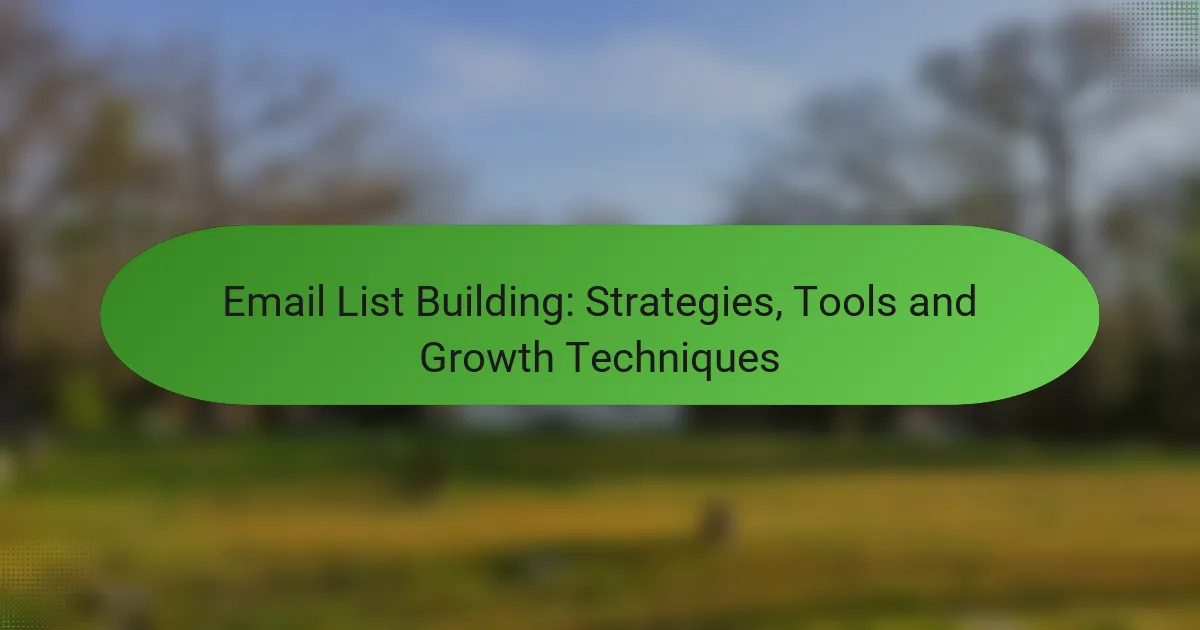Email list building is essential for fostering meaningful connections with your audience and driving engagement. By employing a variety of strategies and utilizing specialized tools, you can effectively attract and retain subscribers while enhancing your overall email marketing efforts.
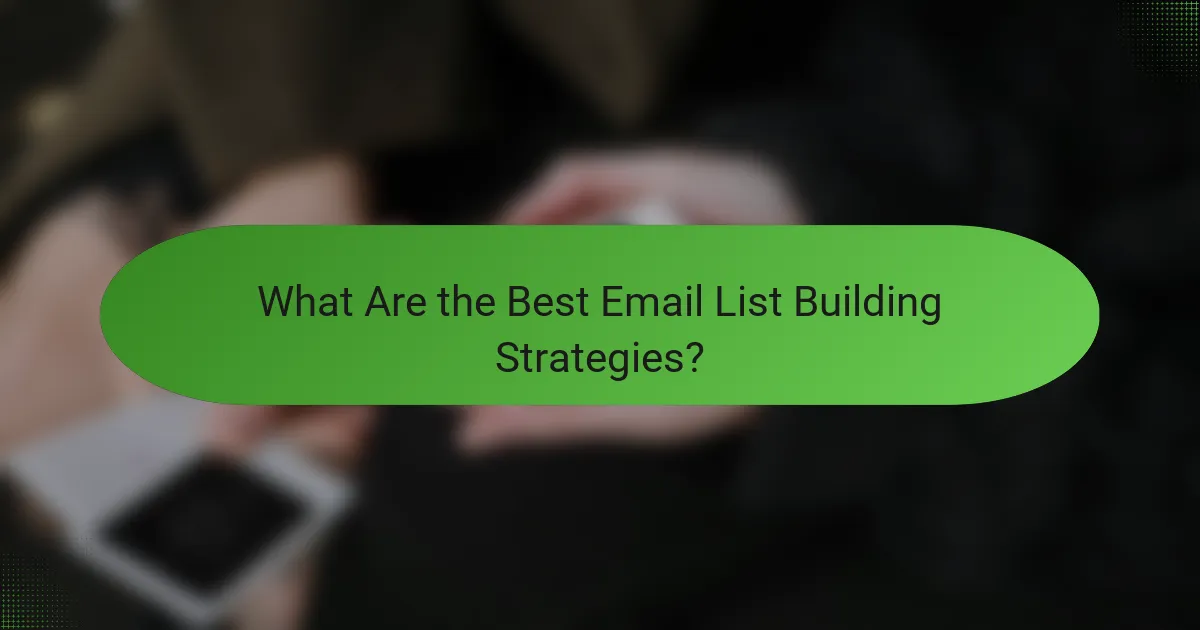
What Are the Best Email List Building Strategies?
The best email list building strategies focus on attracting and retaining subscribers through valuable content and engagement techniques. Implementing a mix of effective methods can significantly enhance your email list growth and improve audience interaction.
Content upgrades
Content upgrades are targeted incentives offered to users in exchange for their email addresses, typically related to specific content they are already engaging with. For example, if a blog post discusses productivity tips, a downloadable checklist or eBook on the same topic can serve as a content upgrade.
To implement this strategy, ensure your upgrades are relevant and high-quality. Use clear calls-to-action (CTAs) to encourage sign-ups, and consider A/B testing different offers to see which resonates best with your audience.
Lead magnets
Lead magnets are valuable resources provided to potential subscribers in exchange for their contact information. Common examples include free trials, discounts, or exclusive content like whitepapers or webinars. The key is to offer something that addresses a specific pain point or interest of your target audience.
When creating lead magnets, focus on quality and relevance. A well-designed lead magnet can increase conversion rates significantly, so consider promoting it through various channels, including your website, social media, and paid ads.
Referral programs
Referral programs incentivize existing subscribers to refer new users by offering rewards, such as discounts or exclusive content. This strategy leverages your current audience to expand your reach organically, as people are more likely to trust recommendations from friends or family.
To set up a referral program, clearly outline the rewards and how subscribers can participate. Promote the program through email campaigns and on your website to maximize visibility and engagement.
Social media integration
Integrating social media with your email list building efforts can enhance visibility and attract new subscribers. Share engaging content and lead magnets on your social channels, and encourage followers to sign up for your email list for more exclusive updates.
Utilize social media advertising to target specific demographics and drive traffic to your sign-up forms. Make sure your social profiles include links to your email subscription page, and consider running contests or giveaways that require email sign-ups for participation.
Webinars and events
Hosting webinars and events can be an effective way to build your email list while providing valuable information to your audience. These interactive sessions allow you to showcase your expertise and engage directly with potential subscribers.
To maximize sign-ups, promote your webinars through multiple channels and require registration via email. Follow up with attendees afterward, offering additional resources or content to keep them engaged and encourage them to remain on your list.
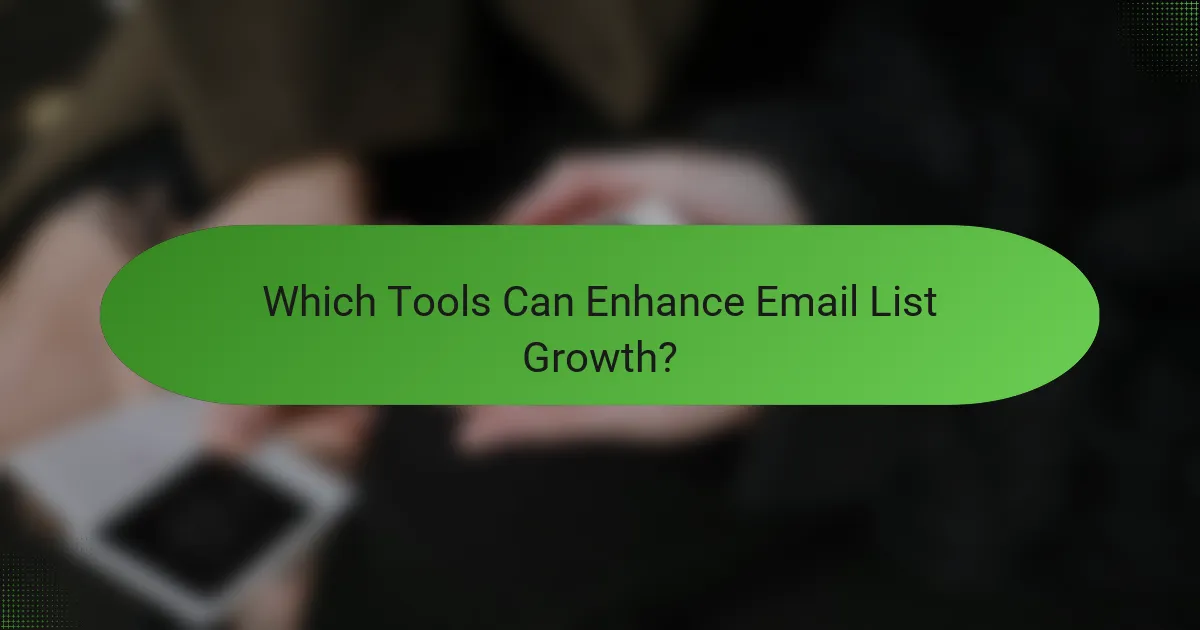
Which Tools Can Enhance Email List Growth?
Several tools can significantly boost your email list growth by simplifying the process of capturing leads and managing subscribers. These platforms offer various features that cater to different needs, from automation to analytics, making it easier to engage with your audience effectively.
Mailchimp
Mailchimp is a popular email marketing tool known for its user-friendly interface and robust features. It allows you to create sign-up forms, landing pages, and automated email campaigns to attract subscribers. With a free tier available, it’s suitable for small businesses looking to start building their email lists without upfront costs.
Consider using Mailchimp’s analytics to track subscriber engagement and optimize your campaigns. Be mindful of the limitations on the number of subscribers and emails sent per month in the free plan, which may require upgrading as your list grows.
ConvertKit
ConvertKit is designed specifically for creators and bloggers, focusing on building relationships through email marketing. It offers customizable sign-up forms and landing pages, as well as automation features that allow you to segment your audience based on their interests.
This tool is particularly effective for those who produce content regularly, as it integrates well with blogging platforms. Keep in mind that while ConvertKit has a free trial, its pricing can increase significantly as your subscriber count rises, so plan your budget accordingly.
OptinMonster
OptinMonster is a lead generation software that helps you create high-converting opt-in forms to grow your email list. It offers various types of forms, including pop-ups, slide-ins, and floating bars, which can be customized to match your website’s design.
Utilizing OptinMonster’s targeting features can significantly improve conversion rates by displaying forms based on user behavior. However, be cautious not to overwhelm visitors with too many pop-ups, as this can lead to a negative user experience.
AWeber
AWeber is a comprehensive email marketing tool that provides a range of features for list building and management. It includes customizable sign-up forms, autoresponders, and detailed analytics to help you understand subscriber behavior.
AWeber is particularly beneficial for small to medium-sized businesses due to its straightforward pricing structure and reliable customer support. However, be aware that the learning curve may be steeper compared to simpler tools, so take advantage of their tutorials and resources to maximize your use of the platform.
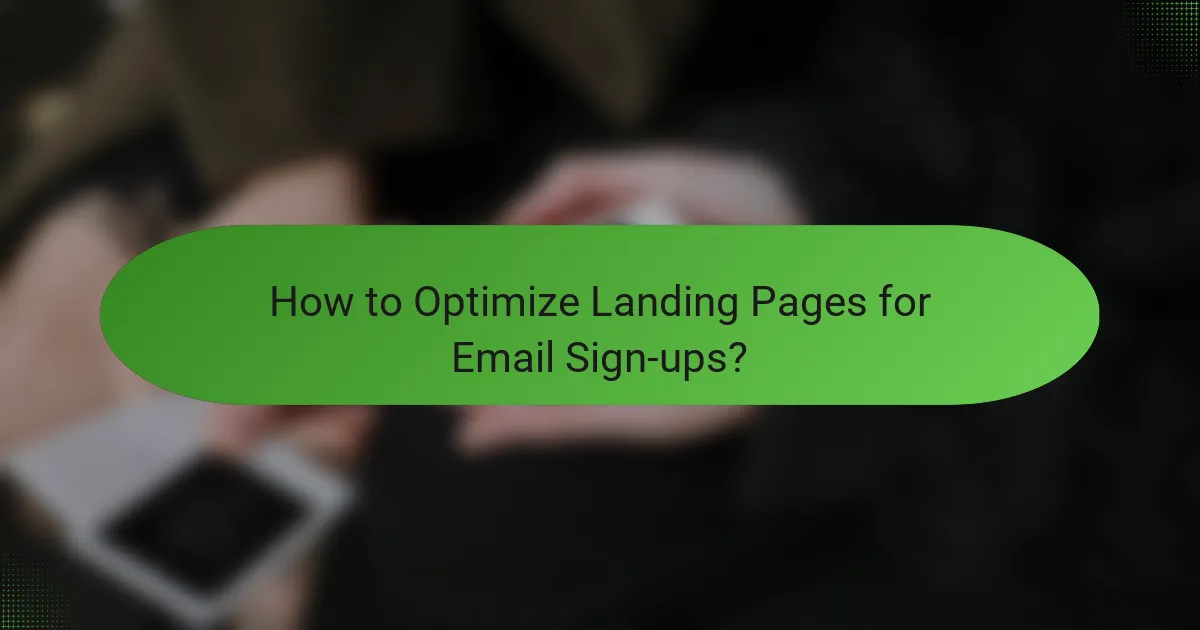
How to Optimize Landing Pages for Email Sign-ups?
To optimize landing pages for email sign-ups, focus on creating an engaging user experience that encourages visitors to subscribe. This involves clear messaging, effective design, and persuasive content that aligns with the interests of your target audience.
Clear call-to-action
A clear call-to-action (CTA) is essential for guiding visitors toward signing up for your email list. Use action-oriented language, such as “Join Now” or “Get Your Free Guide,” to prompt immediate responses. Position your CTA prominently on the page, ideally above the fold, so it’s easily visible without scrolling.
Consider using contrasting colors for your CTA button to make it stand out. A/B testing different phrases and placements can help determine which version drives the highest conversion rates.
Minimalist design
A minimalist design reduces distractions and keeps the focus on the email sign-up form. Limit the number of elements on the page, such as images and text, to create a clean and straightforward layout. This approach helps visitors quickly understand the value of signing up without feeling overwhelmed.
Ensure that your landing page loads quickly, as slow loading times can deter potential subscribers. Aim for a load time of under three seconds to maintain user engagement.
Compelling copy
Compelling copy is crucial for convincing visitors to subscribe to your email list. Highlight the benefits of signing up, such as exclusive content, discounts, or valuable resources. Use concise and persuasive language to communicate these advantages effectively.
Incorporate testimonials or social proof to build trust and credibility. If applicable, mention any privacy policies to reassure users that their information will be protected. Aim for a friendly yet professional tone that resonates with your audience’s preferences.

What Are the Best Practices for Email List Segmentation?
Email list segmentation involves dividing your email subscribers into distinct groups based on specific criteria. This practice enhances targeting and personalization, leading to improved engagement and conversion rates.
Demographic segmentation
Demographic segmentation categorizes subscribers based on characteristics such as age, gender, income, education, and location. This method helps tailor your messaging to resonate with specific groups, increasing the relevance of your content.
For example, a clothing retailer might send different promotions to younger customers compared to older ones, or target urban dwellers with city-specific offers. Consider using surveys or registration forms to gather demographic data effectively.
Behavioral segmentation
Behavioral segmentation focuses on how subscribers interact with your emails and website. This includes tracking actions like purchase history, browsing behavior, and email engagement levels. Understanding these behaviors allows you to send timely and relevant messages.
For instance, you might create a segment for customers who frequently open emails but rarely make purchases, offering them exclusive discounts to encourage conversions. Tools like Google Analytics can help analyze user behavior for effective segmentation.
Engagement-based segmentation
Engagement-based segmentation divides your list according to how actively subscribers engage with your content. This can include metrics such as open rates, click-through rates, and overall interaction frequency. By focusing on engagement, you can identify your most loyal subscribers and those who may need re-engagement strategies.
For example, you could create segments for highly engaged users who receive regular updates and another for less active subscribers, offering them incentives to rekindle their interest. Regularly reviewing engagement metrics is crucial to maintaining effective segmentation.
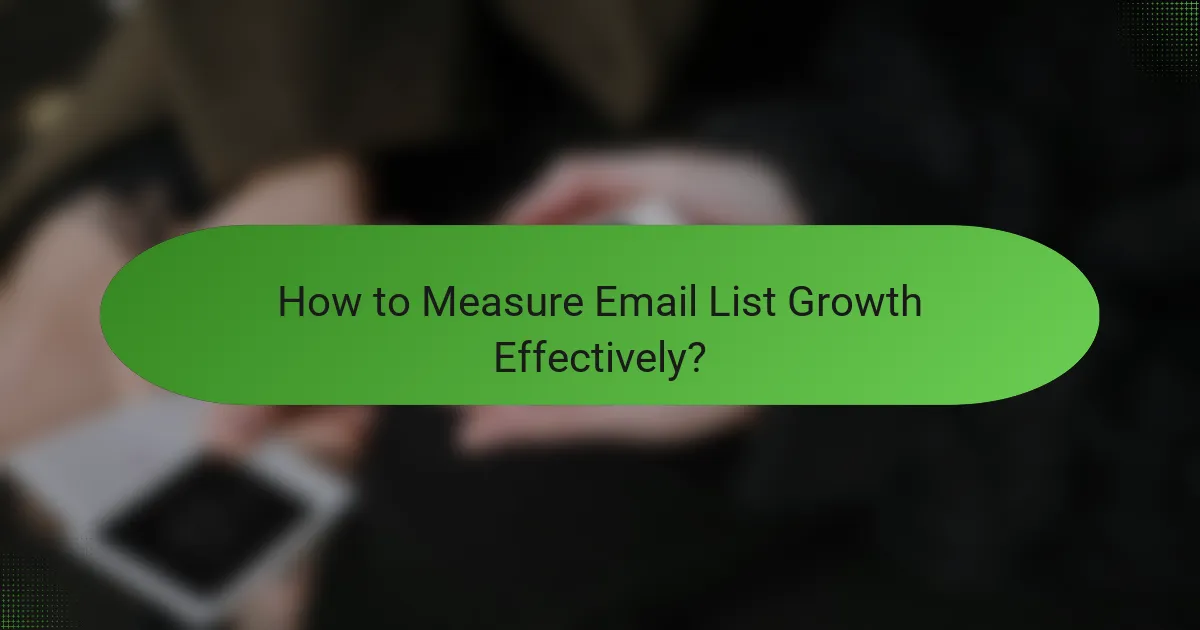
How to Measure Email List Growth Effectively?
To measure email list growth effectively, track the number of new subscribers over a specific period and compare it to the total list size. This will help you understand your growth rate and identify trends in subscriber acquisition.
Growth rate tracking
Growth rate tracking involves calculating the percentage increase in your email list over a defined timeframe. A common formula is to take the number of new subscribers, divide it by the total number of subscribers at the beginning of the period, and multiply by 100 to get a percentage.
For example, if you start with 1,000 subscribers and gain 100 new ones in a month, your growth rate would be (100/1000) x 100 = 10%. Regularly monitoring this metric helps you assess the effectiveness of your marketing strategies.
To enhance your tracking, consider using tools like Google Analytics or email marketing platforms that offer built-in analytics. Set benchmarks for growth rates based on industry standards, which typically range from 2% to 5% monthly, depending on your niche and marketing efforts.
